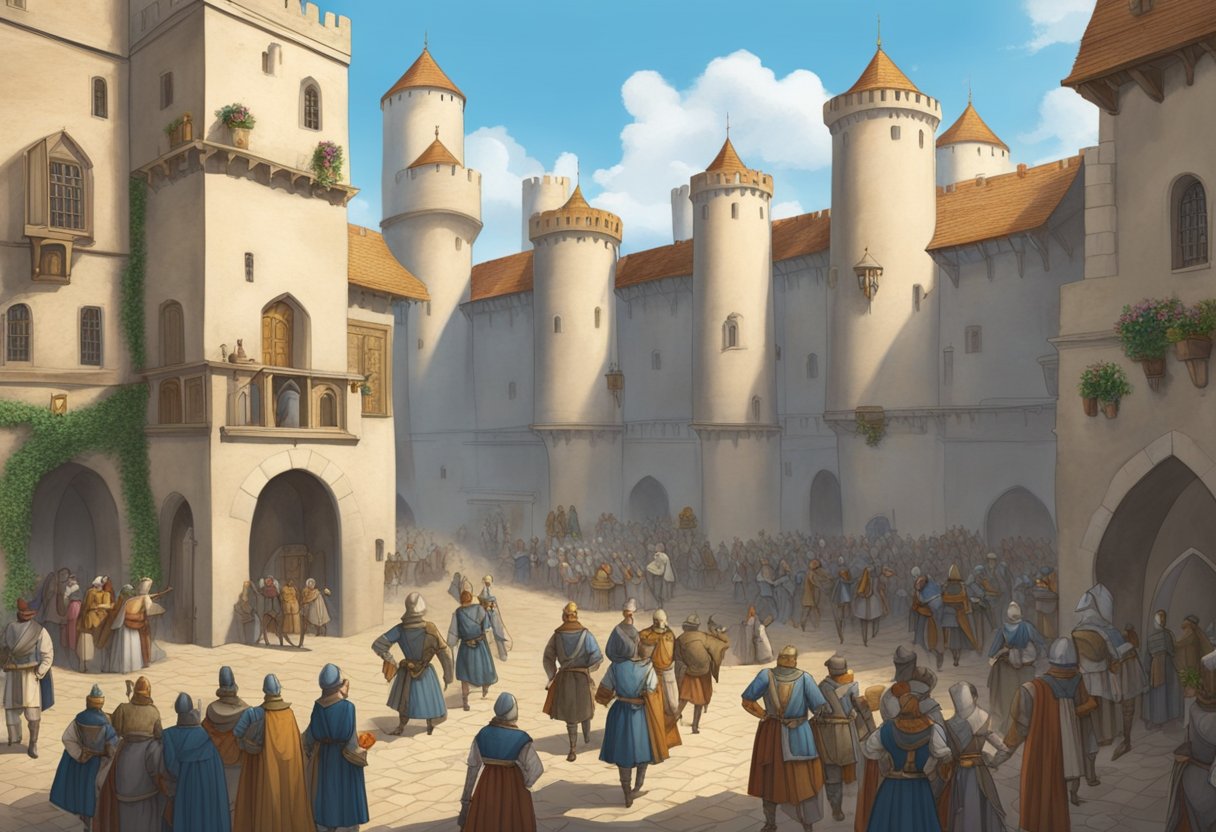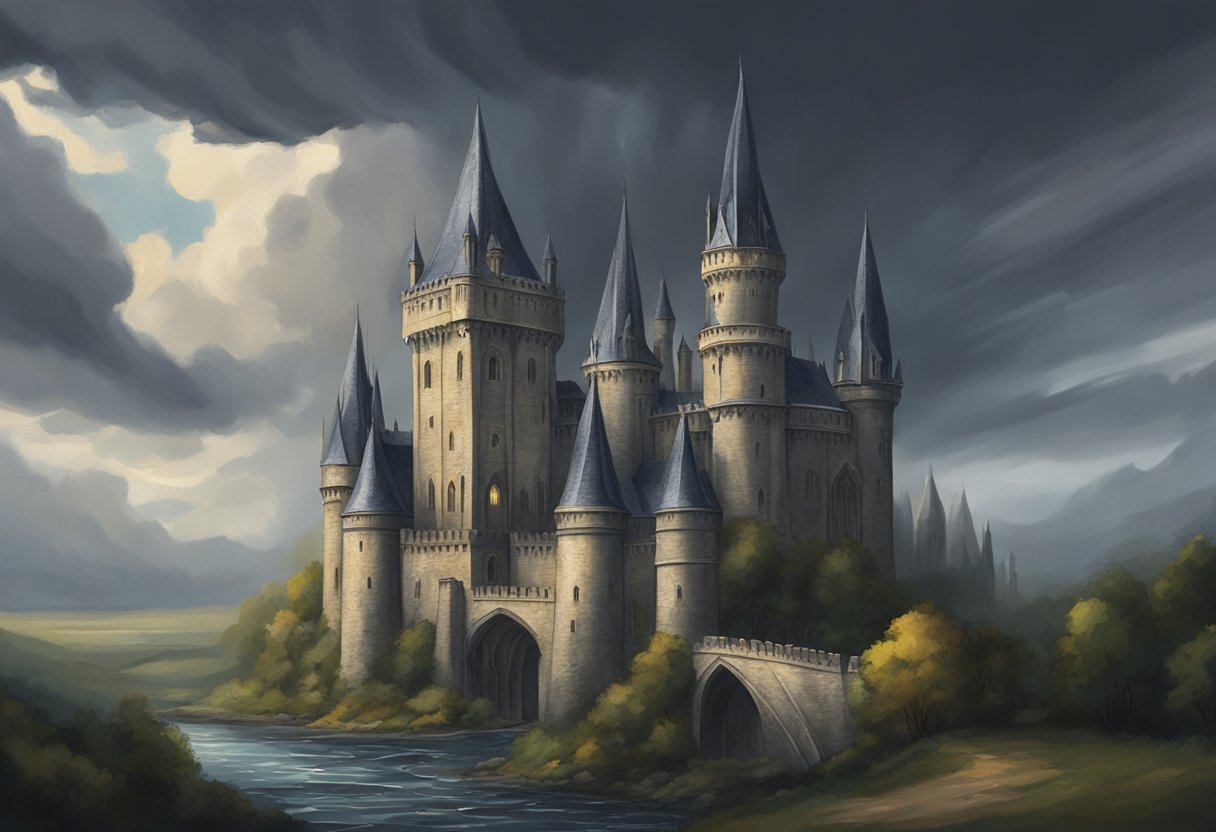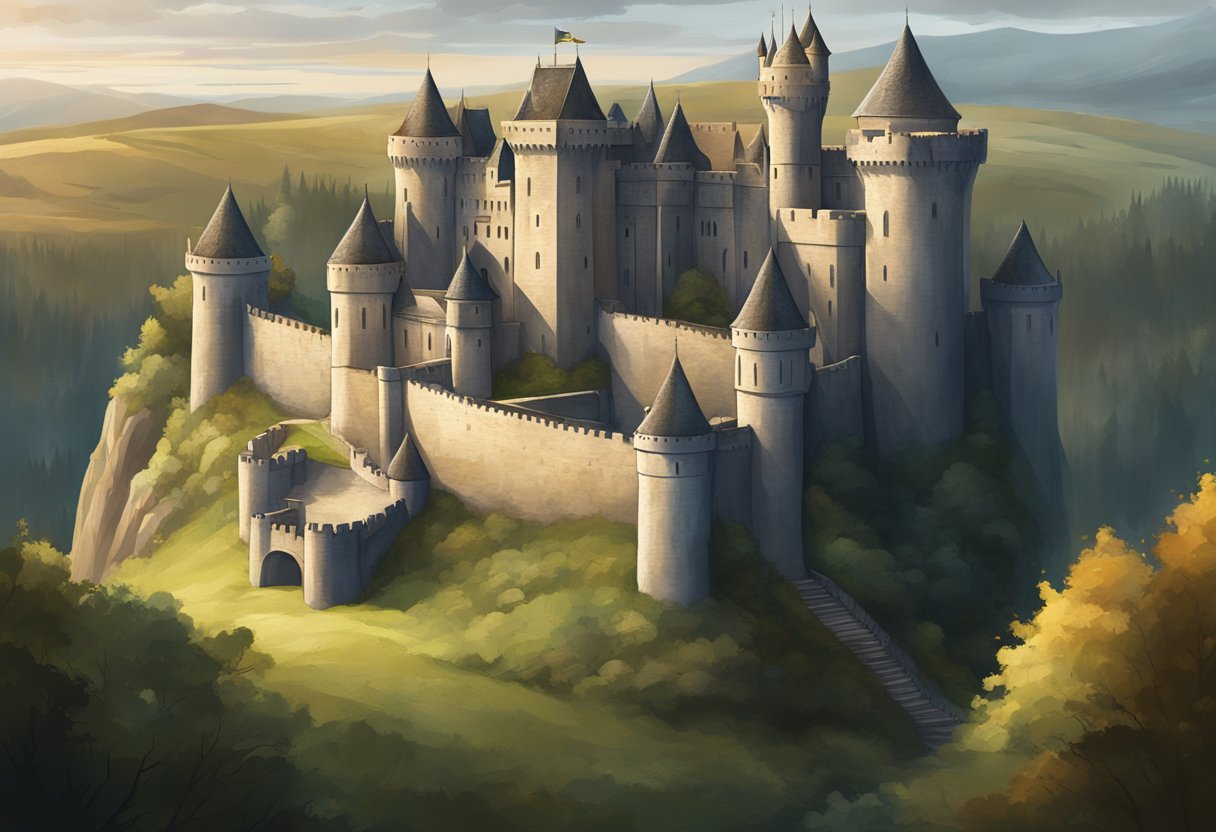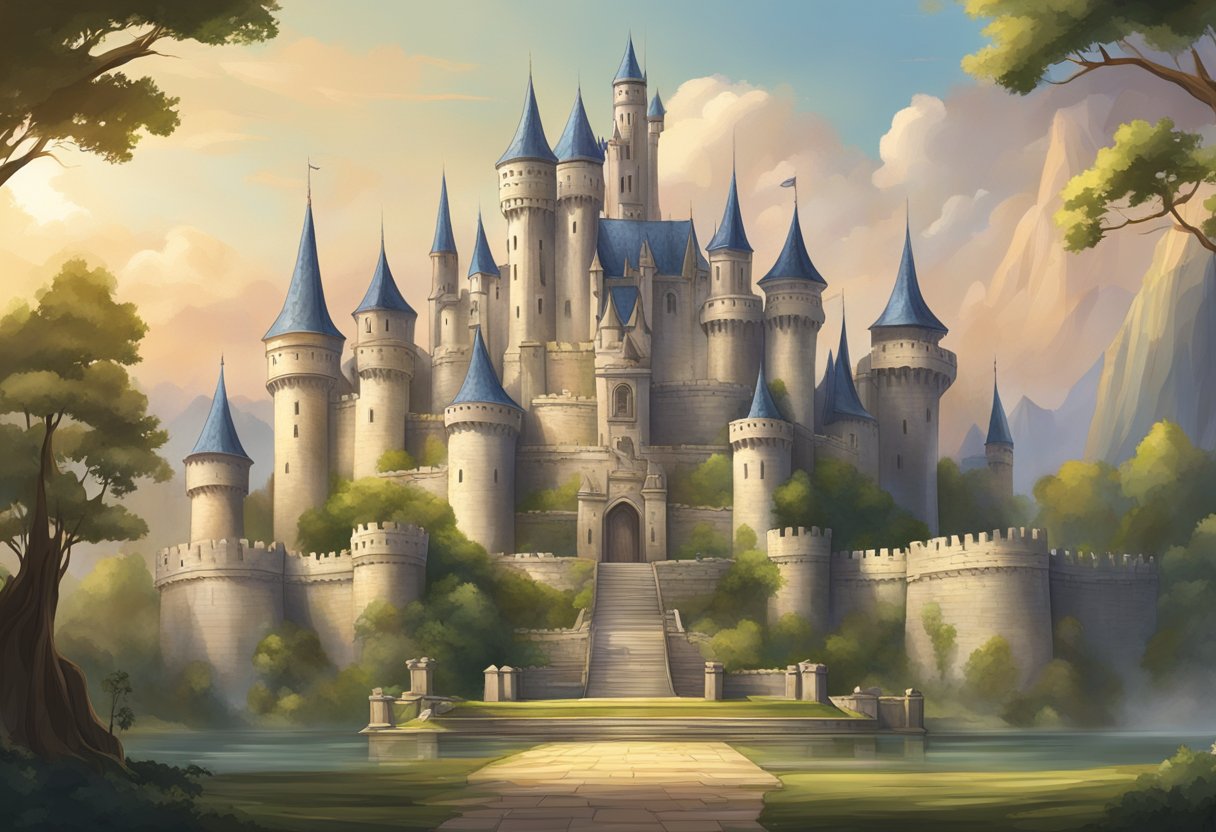While the idea of owning a castle may evoke images of fairy tales and royal opulence, the reality of buying one can be quite the opposite. With numerous listings of cheap castles for sale, acquiring a slice of history is not reserved for the aristocracy anymore. Contrary to popular belief, not all castles come with a king’s ransom price tag—some are available for prices comparable to a suburban home. However, potential buyers should be aware of what the term “cheap” entails in the castle market.

Unsurprisingly, the lower price range often means there are trade-offs to be considered. While the thought of owning a castle might make you feel like royalty, it’s important to remember that an affordable price could mean it’s more castle-sized headache than fairy-tale living. These historical buildings can come with a host of challenges, from requiring extensive restoration to having high maintenance costs. Moreover, the word ‘cheap’ is relative; what is inexpensive for a castle might still be a substantial investment. Prospective buyers need to ready their coffers for not only the purchase but also the ongoing costs associated with castles for sale.
Key Takeaways
- Castles can be more affordable than many people assume.
- Lower prices often mean the potential for higher restoration and maintenance costs.
- “Cheap” in the context of castles still represents a significant financial commitment.
The Quest for Castles: A Beginners Guide
https://www.youtube.com/watch?v=NcGT8K-beuI&embed=true
Embarking on the journey to acquire a lofty fortress or an illustrious chateau can be both thrilling and daunting. Here’s a light-hearted yet informative guide to assist castle enthusiasts in navigating the world of moats, turrets, and historical splendor.
Identifying Your Castle Crush
Before setting foot on a quest to find the perfect castle, one should determine what kind of stronghold sparks joy. Does the heart long for a French chateau nestled amidst the vineyards of the Loire Valley, or does the soul yearn for the rustic charm of a medieval castle perched high in the Scottish Highlands? Castle aficionados might find themselves swooning over the Renaissance elegance of Tuscany’s fortresses or the Gothic grandeur of a moody Irish estate.
- France: Chateaus aplenty, from the Loire Valley to Dordogne.
- Scotland & Ireland: Castles that have weathered many a storm and tale.
- Italy: Tuscany to Umbria, an offering of sunny fortresses and Capri vistas.
Castle Hunting Hotspots: Globe Trotting for Towers
Europe, the epicenter of castle culture, offers a collection of countries each with unique offerings for the prospective castle custodian. In Scotland, the isles are dotted with historic castles, such as those on the Isle of Bute, ripe for the picking. Ireland, with resplendent castles like the Tulira Castle in Galway, can enchant any would-be lord or lady. England and Germany boast of stately homes with towers and battlements aplenty, while Spain and Portugal reveal sun-soaked fortresses and palatial pads.
- Spain & Portugal: Sun-kissed stone and romantic ruins.
- Belgium & Poland: Lesser-traveled, yet treasure-filled castle trails.
Quirky Quarters: The World’s Most Eccentric Estates for Sale
For those with a penchant for the peculiar, the search for quirky castles is a delightful adventure. Embrace the unique with properties like the Fortress of Miolans, an imposing spectacle in France, or the Castiglione Castle near Lake Trasimeno in Italy—an eccentric escape for those who fancy a dip with their dungeons. And let’s not forget about Cravanzana Castle in Italy, where each stone tells a Nutella-sweet story of hazelnut farming.
- France: Fortress of Miolans, a beacon for the brave.
- Italy: Cravanzana Castle, where the walls whisper of hazelnuts.
- Scotland: Ballindooley Castle, bearing tales of clans and conquests.
Moats, Ghosts, and Drafts: The Glamorous Life of Castle Ownership

While owning a castle offers a unique blend of prestige and history, the practicalities involve a trifecta of concerns: incessant maintenance, costly renovations, and the potential for playing host to both tourists and, perhaps, a resident ghost or two.
Maintenance Mayhem: Upkeeping Your Personal Fortress
Maintaining a castle isn’t for the faint of heart. These prestige properties often come with a personal moat, which, contrary to fairy tales, doesn’t clean itself. Prospective owners must consider the upkeep of ancient stone, expansive grounds, and the ever-present challenge of heating massive, drafty halls that were built with defense, not comfort, in mind.
- Moat Maintenance: Expect an armada of leaves in the fall and, if neglected, a moat resembling the swamp creature’s lair.
- Stone Work: The 13th-century walls weren’t made for easy plaster jobs; joints deteriorate, and stones may shift.
- Utilities: Forget “smart homes;” programmable thermostats mean little when you’ve got arrow slits instead of double-glazing.
Renovation Station: From Ruins to Regal Residences
Renovating a castle like Kames Castle or Sauerburg is akin to giving a dinosaur a makeover. It’s not just the stone edifice; these historic properties have interiors that may need a complete overhaul to meet modern standards, often supervised by protective heritage organizations to maintain their status as world heritage sites.
- Essential Upgrades: Indoor plumbing and electricity are non-negotiable for today’s buyers.
- Authenticity: Any changes should align with the era, a task that could make any contractor’s hair turn white.
- Permissions: Always remember, the local heritage society could well be your new overlord.
Hotel? Not Exactly, But You Could Be the Next Castle Host!
If one should wish to offset the eye-watering costs of castle maintenance, opening the grand doors to the public or operating as a niche hotel is an option. Gathering a crowd is rarely an issue when one can boast about residing in a property listed by Ganly Walters or sold by Helen Cassidy.
- Curated Experiences: Milfontes invites visitors to live like royalty, at least temporarily.
- Exclusive Events: Weddings, anyone? You own a luxury real estate hotspot.
- Ghost Tours: Add an extra thrill to the stay, assuming your castle’s history permits.
Owning a castle isn’t quite like nabbing a house in the suburbs. Aside from the fact that a ride-on mower won’t cut it for the grounds, one’s neighbors are less likely to pop over for a cup of sugar at Savoy. Yet, if one has a penchant for history and the wallet to match, the title ‘castle owner’ could add a certain clout at dinner parties that even the finest penthouse might lack.
Sealing the Deal: The Kingly Art of Purchasing Palaces
https://www.youtube.com/watch?v=INGmJoG8Hpo&embed=true
When one fancies a taste of regal life, buying a palace or castle isn’t a mere trade of coins for stones; it’s an epic saga of securing a piece of history. One doesn’t simply buy a château; they embark on a noble quest, fraught with financial fables and bound in royal red tape.
Financial Fables: Affording Your Fairy-Tale Ending
Purchasing a palace is less a matter of finding a winning lottery ticket tucked in your couch and more about sifting through the mystical listings. The prospective monarch in the marketplace may find themselves entranced by the likes of Ballymaquiff Castle, with its promises of historical grandeur and the singular chance to lord over a slice of Ireland. Or, perhaps they eye the Italian allure of Castello in Vendita, nestled in the heart of the verdant Marche region. Here’s a brief treasury rundown:
- Ballymaquiff Castle: A bit of a fixer-upper, but with enough charm to woo a dragon.
- Castello in Vendita, Todi: Italian splendor, where every hallway whispers antiquity and every view screams ‘vino’.
The Royal Red Tape: Navigating the Nobility of Castle Contracts
It’s all fun and games until one encounters the dragon of bureaucracy. Agencies like Patrice Besse are akin to noble squires, guiding one through the majestic, albeit convoluted, labyrinths of legalities. Acquiring a stronghold in Quercy or the enchanted woodlands of Brenne comes with a parchment’s worth of documentation, sealing the bond like a knight’s solemn vow.
From Dream to Domain: Finalizing the Fantasy
The final act of our regal drama unfolds as the dream transforms into a domain. They say when one door closes, a portcullis opens—securing a palatial abode isn’t just about cracking open the coffers; it’s about sealing the deal with the finesse of a courtly dance. Should one cast their gaze upon the premier properties of Ireland, a ceremonial key to the kingdom (also known as finalizing the sale) awaits the brave at heart.




















